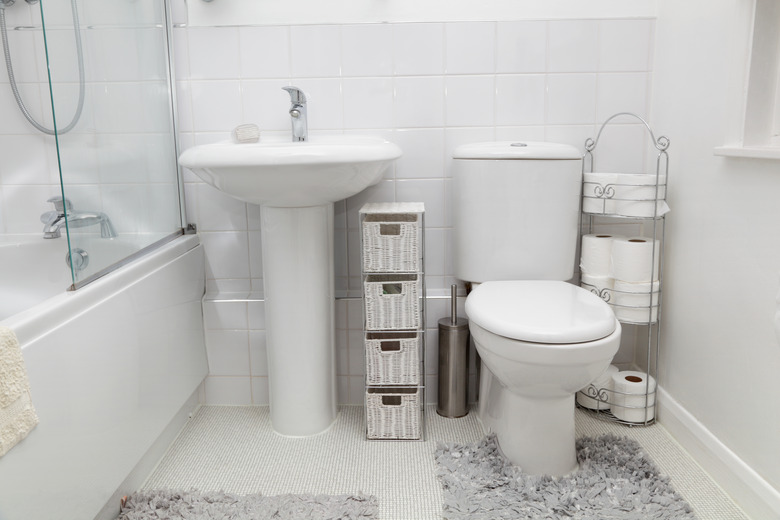Toilet Tanks Without A Floating Ball
If you have not looked inside a toilet tank in some years and are accustomed to the traditional ballcock valves that use a float ball to regulate the tank's water level, you may get a bit of a surprise when you remove the lid from tanks of more modern toilets. Depending on the toilet's particular flushing system, you might encounter a toilet fill valve with a different type of design or simply a smaller tank.
Purpose of Floating Ball
Purpose of Floating Ball
The float ball inside a toilet tank attaches to what is called a ballcock, by way of a thin, horizontal arm. The ballcock is simply the valve that allows water back into the tank after the toilet flushes.
The float ball does as its name implies and floats on the surface of the tank water when the toilet remains unused. When you press the toilet handle and the water drops from the tank into the bowl, the float ball drops along with the water level, which signals the ballcock to allow more water into the tank. As the water level rises again, the float ball rises with it until it reaches a certain height and signals the ballcock to shut off.
Modern Fill Valves
Modern Fill Valves
Normally, when ballcock assemblies are replaced, a newer style of valve that allows water into the tank is installed instead. More modern toilet fill valves perform the same function as the ballcock; they simply do not use an arm with a float ball attached to its end.
If you examine the newer fill valves more closely, you will notice a float cup positioned around the vertical body of the fill valve. This float cup works just like the float ball. It rises and falls with the tank's water level, and you can adjust the float cup to allow in more or less water after each flush.
Different Adjustment Methods
Different Adjustment Methods
If you are accustomed to working with a float ball, you are likely aware of how you normally adjust tank water levels that are too high or too low. To lower the water level when it is too high inside the tank, you can simply bend the arm that connects the ball float to the ballcock assembly downward. To raise the water level, slightly bend this arm up.
With a modern fill valve, you adjust the water level differently. Normally, you pinch a clip on a rod attached to the fill valve and slide the float cup up or down to raise or lower the water level.
Pressure-Assist Tanks
Pressure-Assist Tanks
The most significant difference from a float ball that you may see inside a tank is found in pressure-assist toilets. This type of flushing system uses neither a float ball nor a cup. In this case, you will see a smaller tank within the toilet tank.
This smaller tank is designed to compress trapped air and then force the water down into the bowl. Instead of water filling the toilet tank where it is visible, the water flows up into the smaller tank where it is stored.
